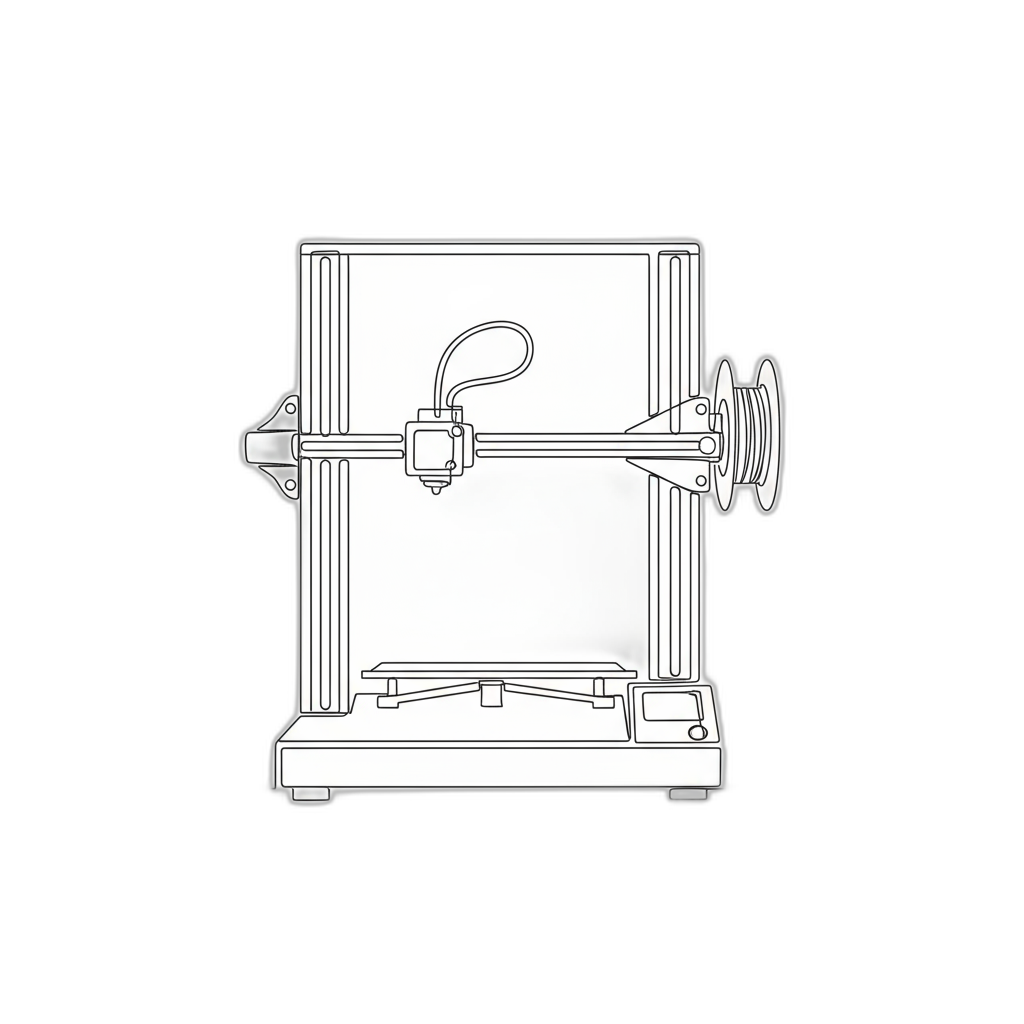Thank you! Your submission has been received!
Oops! Something went wrong while submitting the form.

Nationwide Service
Onsite or Online
USPAP-Compliant
IRS Qualified
DEFENSIBLE, USPAP-COMPLIANT APPRAISAL REPORTS — ACCEPTED BY 10,000+ ORGANIZATIONS






5-Star Service, Trusted & Loved by Hundreds
{{sectionName}}

This is some text inside of a div block.
This is some text inside of a div block.
Starts at
This is some text inside of a div block.
This is some text inside of a div block.
This is some text inside of a div block.
Starts at
This is some text inside of a div block.
{{feeRangeHeader}}
This is some text inside of a div block.
Most Household Goods engagements fall within this range. Larger or unusually complex collections may require a custom quote.
{{pricingByHeader}}
{{pricingBySubheader}}
This is some text inside of a div block.
This is some text inside of a div block.
This is some text inside of a div block.
What Drives Cost?
Number of items to be appraised
Number of items to be appraised
Number of items to be appraised
{{sectionName}}

This is some text inside of a div block.
This is some text inside of a div block.
Starts at
This is some text inside of a div block.
This is some text inside of a div block.
This is some text inside of a div block.
Starts at
This is some text inside of a div block.
{{feeRangeHeader}}
This is some text inside of a div block.
Most Household Goods engagements fall within this range. Larger or unusually complex collections may require a custom quote.
{{pricingByHeader}}
{{pricingBySubheader}}
This is some text inside of a div block.
This is some text inside of a div block.
This is some text inside of a div block.
What Drives Cost?
Number of items to be appraised
Number of items to be appraised
Number of items to be appraised
{{sectionName}}

This is some text inside of a div block.
This is some text inside of a div block.
Starts at
This is some text inside of a div block.
This is some text inside of a div block.
This is some text inside of a div block.
Starts at
This is some text inside of a div block.
{{feeRangeHeader}}
This is some text inside of a div block.
Most Household Goods engagements fall within this range. Larger or unusually complex collections may require a custom quote.
{{pricingByHeader}}
{{pricingBySubheader}}
This is some text inside of a div block.
This is some text inside of a div block.
This is some text inside of a div block.
What Drives Cost?
Number of items to be appraised
Number of items to be appraised
Number of items to be appraised
{{sectionName}}

This is some text inside of a div block.
This is some text inside of a div block.
Starts at
This is some text inside of a div block.
This is some text inside of a div block.
This is some text inside of a div block.
Starts at
This is some text inside of a div block.
{{feeRangeHeader}}
This is some text inside of a div block.
Most Household Goods engagements fall within this range. Larger or unusually complex collections may require a custom quote.
{{pricingByHeader}}
{{pricingBySubheader}}
This is some text inside of a div block.
This is some text inside of a div block.
This is some text inside of a div block.
What Drives Cost?
Number of items to be appraised
Number of items to be appraised
Number of items to be appraised
{{pricingSubheader}}
This is some text inside of a div block.
This is some text inside of a div block.
Starts at
This is some text inside of a div block.
This is some text inside of a div block.
This is some text inside of a div block.
Starts at
This is some text inside of a div block.
{{feeRangeHeader}}
This is some text inside of a div block.
Most Household Goods engagements fall within this range. Larger or unusually complex collections may require a custom quote.
{{pricingByHeader}}
{{pricingBySubheader}}
This is some text inside of a div block.
This is some text inside of a div block.
This is some text inside of a div block.
What Drives Cost?
Number of items to be appraised
Number of items to be appraised
Number of items to be appraised
How the Process Works
1
Appraisal Request
Submit estimate or list of items for our review
2
Quote Issued
We'll share a flat fee quote for your approval
3
Kickoff & Intake
Submit details on all of your items for our review
4
Research & Analysis
We'll conduct detailed research and prepare a written USPAP-compliant report
5
Report Delivery
Delivery of your report and supporting documents (e.g., signed IRS Form 8283) by email
Your Appraiser Search Ends Here
Your Appraiser Search Ends Here
.avif)

Nationwide Coverage – Appraisals Anywhere in the US
Our extensive network of professional appraisers ensures you receive accurate, trusted valuations wherever you are.

Get it done Onsite or Online
Choose between a seamless online process—preferred by most clients—or in-person service for complex assignments.

Any Asset, Covered
Nationwide appraisers for every asset— from buildings & businesses to vehicles & valuables.

Defensible for Any Purpose
For donations, estates, insurance, and more—our USPAP-compliant reports are built to meet the highest standards.
No items found.
A print appraisal represents a meticulous professional assessment that determines the intrinsic and market value of printed artwork. This specialized evaluation requires deep expertise in art history, printmaking techniques, and current market dynamics. Skilled appraisers carefully examine multiple critical elements to establish a comprehensive and accurate valuation of artistic prints.
The assessment process encompasses an in-depth analysis of various print types, including etchings, lithographs, woodblock prints, and serigraphs. Each print medium carries unique characteristics that significantly influence its overall value and collectible status. Professional appraisers employ nuanced methodologies to evaluate these artistic works, considering factors beyond mere visual aesthetic.
Critical components of the appraisal process include investigating the artist's reputation and provenance, assessing the print's physical condition, analyzing edition size, understanding current market trends, and verifying the artwork's authenticity. These elements work synergistically to establish a comprehensive and credible valuation that reflects the print's true worth in the contemporary art marketplace.
The significance of a print appraisal extends far beyond simple monetary assessment. It serves as a crucial documentation tool for collectors, galleries, museums, and insurance providers, offering an authoritative perspective on an artwork's historical and financial significance. By providing a detailed, professional evaluation, print appraisals enable informed decision-making and help protect valuable artistic investments.
The assessment process encompasses an in-depth analysis of various print types, including etchings, lithographs, woodblock prints, and serigraphs. Each print medium carries unique characteristics that significantly influence its overall value and collectible status. Professional appraisers employ nuanced methodologies to evaluate these artistic works, considering factors beyond mere visual aesthetic.
Critical components of the appraisal process include investigating the artist's reputation and provenance, assessing the print's physical condition, analyzing edition size, understanding current market trends, and verifying the artwork's authenticity. These elements work synergistically to establish a comprehensive and credible valuation that reflects the print's true worth in the contemporary art marketplace.
The significance of a print appraisal extends far beyond simple monetary assessment. It serves as a crucial documentation tool for collectors, galleries, museums, and insurance providers, offering an authoritative perspective on an artwork's historical and financial significance. By providing a detailed, professional evaluation, print appraisals enable informed decision-making and help protect valuable artistic investments.
Print appraisers are specialized professionals who bring diverse expertise to evaluating different types of printed artworks. These experts possess nuanced skills that allow them to assess prints across multiple categories, each requiring distinct technical knowledge and market understanding.
Fine art print appraisers delve deep into limited edition works, lithographs, etchings, and serigraphs. They meticulously analyze artistic techniques, provenance, condition, and current market trends to determine precise valuations. Their comprehensive understanding of artistic movements and creator reputations enables accurate price assessments.
Photographic print appraisers focus on evaluating images across historical periods, examining technical aspects like print type, paper quality, mounting techniques, and photographer reputation. Their expertise is critical in assessing both vintage and contemporary photographic collections, considering historical context and artistic significance.
Historical print specialists concentrate on culturally significant documents, including exploration maps, significant event illustrations, and rare publication prints. These professionals conduct extensive research, investigating origin, rarity, preservation state, and historical importance to establish comprehensive valuations.
Commercial print appraisers analyze prints created for marketing, advertising, and commercial purposes. They assess potential market value by understanding printing processes, design elements, and commercial art market dynamics.
Specialized technique appraisers concentrate on specific printmaking methods like woodblock, intaglio, screen printing, and other intricate processes. Their deep technical knowledge allows them to recognize subtle variations that impact artwork value, providing highly refined assessments based on production technique intricacies.
Each print appraiser brings unique perspectives and specialized skills, contributing to a comprehensive understanding of print valuation across diverse artistic and commercial domains.
Fine art print appraisers delve deep into limited edition works, lithographs, etchings, and serigraphs. They meticulously analyze artistic techniques, provenance, condition, and current market trends to determine precise valuations. Their comprehensive understanding of artistic movements and creator reputations enables accurate price assessments.
Photographic print appraisers focus on evaluating images across historical periods, examining technical aspects like print type, paper quality, mounting techniques, and photographer reputation. Their expertise is critical in assessing both vintage and contemporary photographic collections, considering historical context and artistic significance.
Historical print specialists concentrate on culturally significant documents, including exploration maps, significant event illustrations, and rare publication prints. These professionals conduct extensive research, investigating origin, rarity, preservation state, and historical importance to establish comprehensive valuations.
Commercial print appraisers analyze prints created for marketing, advertising, and commercial purposes. They assess potential market value by understanding printing processes, design elements, and commercial art market dynamics.
Specialized technique appraisers concentrate on specific printmaking methods like woodblock, intaglio, screen printing, and other intricate processes. Their deep technical knowledge allows them to recognize subtle variations that impact artwork value, providing highly refined assessments based on production technique intricacies.
Each print appraiser brings unique perspectives and specialized skills, contributing to a comprehensive understanding of print valuation across diverse artistic and commercial domains.
Print appraisals are a critical resource for individuals and institutions with significant art collections, offering comprehensive insights into the value and significance of print assets. These professional evaluations serve multiple essential purposes that extend far beyond simple monetary assessment.
Insurance protection represents a primary motivation for obtaining print appraisals. By documenting precise market values, collectors can secure appropriate coverage that safeguards against potential loss or damage. An accurate appraisal ensures that valuable prints are comprehensively protected, enabling swift and fair compensation in unforeseen circumstances like theft, environmental damage, or accidental destruction.
Tax-related considerations also make print appraisals invaluable. For individuals contemplating significant art donations, a professional appraisal becomes crucial for substantiating charitable contributions. These detailed assessments provide the documentation necessary to support tax deductions, particularly for donations exceeding specific financial thresholds, while maintaining compliance with regulatory requirements.
Estate planning represents another critical context where print appraisals prove instrumental. During inheritance proceedings or estate settlements, precise valuations facilitate equitable asset distribution. Comprehensive appraisals help executors and beneficiaries understand the true financial value of art collections, ensuring transparent and fair allocation of inherited artistic assets.
For art market participants, appraisals serve as essential tools during purchase or sale transactions. They provide objective market insights, helping buyers and sellers establish fair pricing based on comprehensive evaluations of factors like provenance, condition, rarity, and historical significance. This approach promotes transparency and informed decision-making within the art marketplace.
Ultimately, print appraisals empower collectors, institutions, and art enthusiasts with authoritative information. They transform art collections from mere aesthetic possessions into well-documented, strategically understood assets that can be intelligently managed across financial, legal, and personal contexts.
Insurance protection represents a primary motivation for obtaining print appraisals. By documenting precise market values, collectors can secure appropriate coverage that safeguards against potential loss or damage. An accurate appraisal ensures that valuable prints are comprehensively protected, enabling swift and fair compensation in unforeseen circumstances like theft, environmental damage, or accidental destruction.
Tax-related considerations also make print appraisals invaluable. For individuals contemplating significant art donations, a professional appraisal becomes crucial for substantiating charitable contributions. These detailed assessments provide the documentation necessary to support tax deductions, particularly for donations exceeding specific financial thresholds, while maintaining compliance with regulatory requirements.
Estate planning represents another critical context where print appraisals prove instrumental. During inheritance proceedings or estate settlements, precise valuations facilitate equitable asset distribution. Comprehensive appraisals help executors and beneficiaries understand the true financial value of art collections, ensuring transparent and fair allocation of inherited artistic assets.
For art market participants, appraisals serve as essential tools during purchase or sale transactions. They provide objective market insights, helping buyers and sellers establish fair pricing based on comprehensive evaluations of factors like provenance, condition, rarity, and historical significance. This approach promotes transparency and informed decision-making within the art marketplace.
Ultimately, print appraisals empower collectors, institutions, and art enthusiasts with authoritative information. They transform art collections from mere aesthetic possessions into well-documented, strategically understood assets that can be intelligently managed across financial, legal, and personal contexts.
Online print appraisals have become increasingly sophisticated, offering a convenient and comprehensive method for valuing artistic prints without traditional in-person assessments. Modern appraisal processes leverage high-resolution digital photography and advanced communication technologies to deliver accurate evaluations.
Professional appraisers typically conduct these assessments by requesting detailed digital photographs and supplementary documentation about the print. Through email, text, and video conferencing platforms, experts can thoroughly examine an artwork's characteristics, including artist authenticity, condition, historical significance, and market value.
The digital appraisal process involves multiple strategic steps. Initially, clients submit clear, well-lit images from various angles, accompanied by detailed provenance information. Appraisers then meticulously analyze these materials, comparing them against comprehensive art market databases and drawing upon extensive professional expertise.
When additional nuanced details are required, live video consultations enable real-time interaction. These virtual meetings allow appraisers to request closer examinations, ask specific questions, and gain deeper insights into the print's unique attributes. Advanced video technologies facilitate remarkably precise evaluations that rival traditional in-person assessments.
Contemporary online appraisal methodologies maintain rigorous professional standards, ensuring that digital evaluations are just as credible and thorough as traditional approaches. Licensed professionals apply the same meticulous criteria, considering factors like artistic technique, historical context, condition, rarity, and current market trends to determine accurate valuations.
This digital approach significantly enhances accessibility, enabling art collectors, investors, and enthusiasts to obtain expert assessments regardless of geographic limitations. By embracing technological innovations, print appraisals have evolved to become more efficient, flexible, and globally connected.
Professional appraisers typically conduct these assessments by requesting detailed digital photographs and supplementary documentation about the print. Through email, text, and video conferencing platforms, experts can thoroughly examine an artwork's characteristics, including artist authenticity, condition, historical significance, and market value.
The digital appraisal process involves multiple strategic steps. Initially, clients submit clear, well-lit images from various angles, accompanied by detailed provenance information. Appraisers then meticulously analyze these materials, comparing them against comprehensive art market databases and drawing upon extensive professional expertise.
When additional nuanced details are required, live video consultations enable real-time interaction. These virtual meetings allow appraisers to request closer examinations, ask specific questions, and gain deeper insights into the print's unique attributes. Advanced video technologies facilitate remarkably precise evaluations that rival traditional in-person assessments.
Contemporary online appraisal methodologies maintain rigorous professional standards, ensuring that digital evaluations are just as credible and thorough as traditional approaches. Licensed professionals apply the same meticulous criteria, considering factors like artistic technique, historical context, condition, rarity, and current market trends to determine accurate valuations.
This digital approach significantly enhances accessibility, enabling art collectors, investors, and enthusiasts to obtain expert assessments regardless of geographic limitations. By embracing technological innovations, print appraisals have evolved to become more efficient, flexible, and globally connected.
Sorry! We haven't published any articles on this topic yet.
BEST-IN-CLASS APPRAISERS, CREDENTIALED BY:





